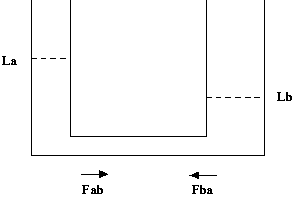Learning Qualitative Models of U-tubes

Contents and links
Qualitative models are often better suited for several tasks
than traditional quantitative (numeric) methods. These tasks
include diagnosis, generating explanations of a system's
behaviour and designing novel devices from first principles.
A more fundamental problem in the theory of dynamic
systems is the identification of the system itself.
The basic problem is as follows. We are given examples of the behaviour of a dynamic
system. We want to find a model that explains these examples. Accomplishing
this, even at the qualitative level, is quite difficult.
As an example, consider a ``U-tube'' system which consists just of two
containers connected by a tube as shown below:

Even a system as simple as this can have almost almost 195,000 possible
qualitative states when using a QSIM formalism,
yet very few (only 32) of these are
actually ``legal''.
Learning legal states of a system
The problem addressed by the
datasets provided here is to learn rules that identify
the legal
states of this system. These rules, along with built-in assumptions of continuity in QSIM,
are sufficient to identify the dynamics of the system.
This requires determinate,
ground background knowledge: experiments and results are reported in
[Bratko I., Muggleton S. and Varsek A. (1992).
- The target predicate is the relation
state(La,Lb,Fab,Fba),
where La, Lb, Fab and Fba are as shown in
the figure.
- The background knowledge is a tabulation of QSIM constraint
primitives.
- Consistency of infinite values in the
add constraint can be
ignored for this problem. Further, since add requires a very
large number of ground facts, it is represented by three more
efficient predicates. norm_mag/4 normalises a qualitative
value with respect to a landmark. lookup_consist_table/3 is a
lookup table for adding signs. verify_add_deriv/3 is a lookup
table for adding directions of derivatives.
- Additional background predicates provide range information.
The QSIM constraints
m_plus/2 and m_minus/2
were only tabulated for empty lists of corresponding values.
All arguments of the background predicates are of the
same type; they are compound terms of the form
Func : QualValue/DirOfChange
The data used in these experiments is contained in
one compressed TAR file.
This data is more recent than the Golem data, and
does not require the background to be determinate or ground. Consequently,
the background knowledge fits QSIM practice more
closely, consisting of QSIM predicate definitions
as described in
[Kuipers B. (1986)].
All the data used in these experiments is contained in
one compressed .pl file
.
Bibliography
Bratko I., Muggleton S. and Varsek A. (1992).
Learning Qualitative Models of Dynamic Systems
in S. Muggleton editor.
Inductive Logic Programming, Academic Press, London.
Kuipers B. (1986).
Qualitative simulation
in Artificial Intelligence, volume 29, pages 289--338.
Up to applications main page.
 Machine Learning Group Home Page
Machine Learning Group Home Page


 Machine Learning Group Home Page
Machine Learning Group Home Page